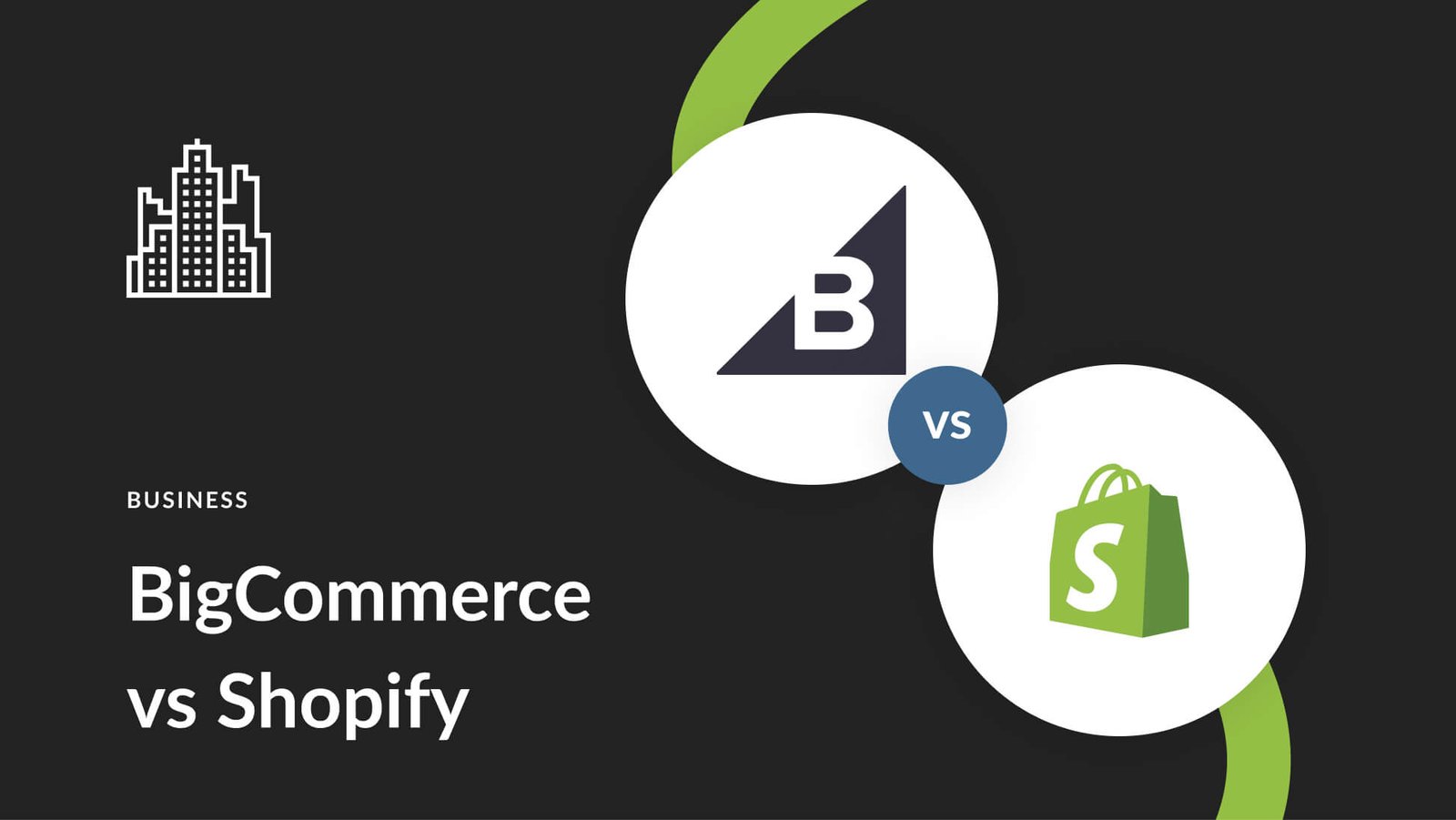Choosing the right eCommerce platform is crucial to your business’s growth and success. Two of the industry’s leading contenders—BigCommerce and Shopify—offer powerful solutions for online store owners. Yet, they differ in several key areas. In this article, we compare their features, pricing structures, usability, and scalability to help you decide which platform aligns best with your business requirements.
Overview of the Platforms
Shopify is known for its user-friendly interface and extensive app ecosystem. With over 4 million active stores worldwide, Shopify provides an intuitive setup that appeals especially to beginners. Its vast library of themes and a wide range of third-party apps make it a popular choice among small to medium-sized businesses looking for a fast, all-in-one solution.
BigCommerce, on the other hand, is celebrated for its robust built-in features and flexibility. Targeted more toward larger or rapidly scaling businesses, BigCommerce offers advanced customization options and is particularly strong when it comes to handling high-volume sales and complex product catalogs. While its learning curve might be steeper, its extensive native functionalities can save you additional monthly costs on apps.
Pricing and Cost Structure
Pricing is often a deciding factor. Both platforms offer entry-level plans starting at around $29 per month. However, their pricing models differ notably:
Shopify offers several tiers—from Basic to Advanced—and an enterprise option, Shopify Plus, for high-volume sellers. One of its drawbacks is that if you choose to use an external payment gateway, Shopify charges additional transaction fees (ranging from 0.5% to 2%) unless you use Shopify Payments.
BigCommerce provides similar tiered pricing, but a key advantage is that it does not charge any transaction fees on any plan. This makes BigCommerce particularly attractive for high-volume businesses where every saved percentage can add up to significant cost savings. Additionally, BigCommerce includes more built-in features (such as unlimited staff accounts and advanced product options) without relying on numerous third-party apps.
Ease of Use and Setup
When starting an online store, a smooth and intuitive setup is essential—especially for those with limited technical expertise.
Shopify is widely acclaimed for its ease of use. Its dashboard is clean and intuitive, complete with step-by-step guidance and tooltips for every feature. The drag-and-drop editor makes it simple to customize your storefront without any coding knowledge. This user-friendly design has helped countless entrepreneurs launch their first store quickly and efficiently.
BigCommerce also offers a user-friendly interface; however, its rich feature set comes with a steeper learning curve. While it provides powerful customization options (such as the ability to add advanced product variants or custom fields), it may require a bit more time to master if you are new to eCommerce platforms. For businesses that eventually need deeper control, the extra effort can pay off.
Customization and Design Options
Your store’s design is your brand’s first impression. Both Shopify and BigCommerce provide a variety of themes, but they differ in how much customization they allow.
Shopify features a wide selection of free and paid themes that are mobile-responsive and modern. The platform’s theme editor is simple to use, and if you have coding skills, Shopify’s Liquid templating language allows for deeper customization. However, some users may find that significant design changes require additional work or expert assistance.
BigCommerce offers a broader range of built-in customization features. Its theme engine allows for more extensive editing of HTML and CSS, providing greater flexibility to create a truly unique storefront. This level of control makes BigCommerce especially appealing for businesses with complex product configurations or those targeting B2B markets.
Scalability and Performance
As your business grows, the eCommerce platform you choose must be able to handle increased traffic and a larger product catalog without compromising performance.
Shopify scales very well and is trusted by many high-volume brands. Its cloud-based infrastructure guarantees high uptime and fast load times. However, if your store experiences rapid growth, you might eventually need to upgrade to higher-tier plans or Shopify Plus to access additional features and reduce transaction fees.
BigCommerce is designed with scalability in mind. Its robust architecture and built-in advanced features allow for seamless management of large inventories and complex sales channels. With BigCommerce, you can expect smooth performance even during peak shopping seasons, making it a preferred choice for enterprises and businesses expecting high growth.
Sales, Marketing, and SEO Capabilities
Both platforms offer tools to help boost your online sales, though they approach marketing and SEO differently.
Shopify comes with a comprehensive suite of marketing tools including discount codes, gift cards, and email marketing integrations. Its extensive app store provides additional functionalities for upselling, social media marketing, and advanced analytics. However, Shopify’s URL structure includes prefixes like “/products/” or “/collections/,” which might be less customizable for SEO purists.
BigCommerce provides strong out-of-the-box SEO features, allowing you to fully customize URLs, title tags, and meta descriptions. These advanced SEO controls give you more technical flexibility to optimize your site for search engines. Additionally, BigCommerce’s native features—such as product filtering and real-time shipping quotes—enhance the overall shopping experience and support multi-channel selling.
Payment Gateways and Transaction Fees
Payment processing is critical to your online store’s profitability.
Shopify integrates with over 100 payment gateways and offers its own solution—Shopify Payments—which helps reduce extra fees if used. However, if you choose an external gateway, additional transaction fees can apply, potentially cutting into your margins.
BigCommerce supports over 65 payment gateways across 250 local payment methods globally and does not charge transaction fees. This makes it a cost-effective choice for high-volume sellers who wish to avoid extra costs per transaction.
Customer Support and Community Resources
Reliable customer support is essential when running an online business.
Shopify is well-known for its 24/7 customer support via live chat, email, and phone. It also has an extensive help center and a vibrant community forum, along with Shopify Compass for free educational resources.
BigCommerce offers similar 24/7 support channels, including phone and live chat support. Its dedicated onboarding consultants for enterprise customers and a wealth of documentation ensure that you have the help you need. While BigCommerce’s support is robust, some users find Shopify’s support to be slightly more streamlined and faster to respond.
Which Platform Should You Choose?
Deciding between BigCommerce and Shopify ultimately comes down to your business needs and growth plans:
Choose Shopify if you value ease of use, a vast app ecosystem, and an attractive, beginner-friendly interface. Shopify is ideal for startups and small to medium-sized businesses that want to launch quickly and take advantage of a large community of users and experts.
Choose BigCommerce if you need advanced customization, robust built-in features, and a platform designed for high-volume sales. BigCommerce’s lack of transaction fees and deeper technical controls make it an excellent choice for growing enterprises and businesses with complex product catalogs.
Final Thoughts
Both Shopify and BigCommerce are outstanding eCommerce platforms, each with its unique strengths. Shopify shines with its simplicity, user-friendly design, and extensive app marketplace, making it perfect for businesses looking to get started quickly with minimal technical hurdles. In contrast, BigCommerce offers a wealth of built-in features, greater customization, and a pricing structure that benefits high-volume sellers.
Ultimately, the best choice depends on your specific business model, budget, and future growth plans. Take advantage of the free trial periods each platform offers to explore their features firsthand. With careful consideration of your needs, you can choose the platform that best sets the stage for your online success.





